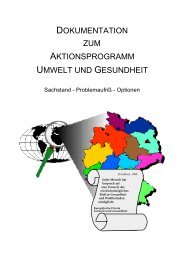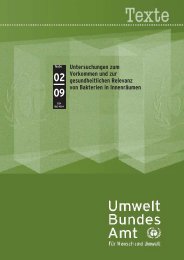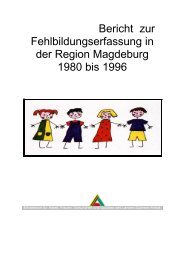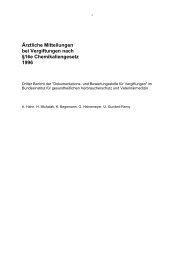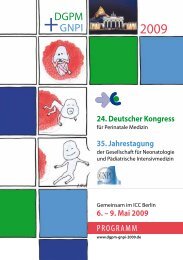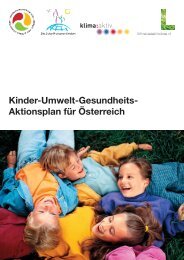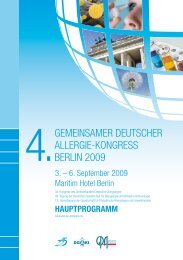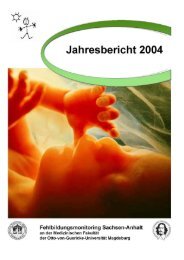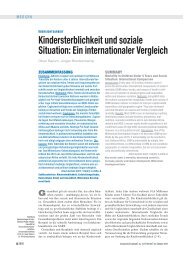Wiener Gesundheits- und Sozialsurvey Vienna Health and Social ...
Wiener Gesundheits- und Sozialsurvey Vienna Health and Social ...
Wiener Gesundheits- und Sozialsurvey Vienna Health and Social ...
Sie wollen auch ein ePaper? Erhöhen Sie die Reichweite Ihrer Titel.
YUMPU macht aus Druck-PDFs automatisch weboptimierte ePaper, die Google liebt.
SUMMARY AND CONCLUSIONS<br />
Satisfaction with family life <strong>and</strong> leisure time activities<br />
increases considerably with age <strong>and</strong> is lowest among<br />
those with the smallest incomes. The latter also have the<br />
weakest social network at their disposal <strong>and</strong> are least satisfied<br />
with their social contacts. Political commitment<br />
<strong>and</strong> political education are particularly low among unqualified<br />
labourers, persons with compulsory education<br />
only, as well as among those with the smallest incomes.<br />
In summary, the biggest deficits concerning all of the<br />
social resources examined were fo<strong>und</strong> among people of<br />
the lowest educational level (compulsory education on-<br />
34<br />
Priority Measures<br />
Resources of <strong>and</strong> Pressure on Individuals<br />
Individual resources are usually of a psychological nature.<br />
They include aspects such as personal skills, selfconfidence,<br />
control mechanisms, personal dispositions<br />
<strong>and</strong> attitudes, as well as a person’s spiritual dimension.<br />
All of these are acquired in the course of a person’s<br />
socialisation, some during childhood, others later<br />
on in life, the latter being referred to as personal resources.<br />
The evaluation of individual resources showed that 32<br />
percent of male interviewees– some less frequently than<br />
others - had experienced physical violence in the home<br />
ly), the lowest income level (the lowest 15 percent of<br />
household incomes approximately), as well as among<br />
foreigners. These groups are also most affected by their<br />
housing situation, as well as by pressure at work.<br />
Looking at age groups reveals a general trend towards<br />
higher social resources (especially income, but not education)<br />
with increasing age. The same is true for overall<br />
satisfaction with all of the examined spheres of life. The<br />
nature of the study did not allow for any conclusions as<br />
to whether this had to do with a general age trend or was<br />
partly due to a generation effect.<br />
● Offer improved educational facilities for everyone<br />
● Provide access to education, information <strong>and</strong> counselling, particularly for people in lower income<br />
brakkets<br />
● Facilitate access to information <strong>and</strong> knowledge, reduce obstacles<br />
● Humanize working conditions<br />
● Introduce fair salary/wage systems<br />
● Provide equal access to external resources<br />
● Establish equality for all social levels, with special emphasis on the lowest level as well as on foreigners<br />
● Improve social support <strong>and</strong> establish/open up new <strong>and</strong> existing networks for (<strong>and</strong> with) the socially disadvantaged<br />
● Improve material, physical, psychological <strong>and</strong> social living conditions for disadvantaged young people<br />
● Improve women’s economic situation<br />
● Fight poverty <strong>and</strong> need<br />
● Offer targeted measures for specific groups (focus on: women, young people, families, people in gainful<br />
employment with low qualifications)<br />
● Reduce adverse housing conditions<br />
● Lower the likelihood of psychovegetative diseases by reducing stress situations, e.g. emotional stress,<br />
pressure to perform, <strong>and</strong> over-stimulation<br />
● Raise social integration by establishing/exp<strong>and</strong>ing social networks<br />
during childhood. The same is true for 24 percent of female<br />
interviewees. Those with fewer vocational qualifications<br />
are more affected than those better qualified, the<br />
noticeable exception being women in leading positions,<br />
with whom a striking frequency of family violence during<br />
childhood was fo<strong>und</strong>. Fathers are more likely to resort<br />
to violence than mothers.<br />
The majority of interview partners believes they can influence<br />
their state of health out of their own accord, an<br />
opinion most prevalent among people of medium age<br />
<strong>and</strong> especially among members of higher income groups<br />
WIENER GESUNDHEITS- UND SOZIALSURVEY




